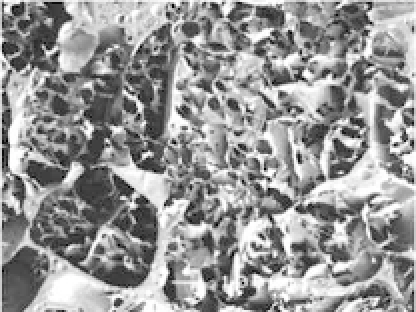Biomedical Engineering Reference
In-Depth Information
Figure 22.1.
Preparation of a hybrid sponge of biodegradable synthetic
polymers and collagen.
inthepores.AllthesurfacesofthePLGAspongeswerecoveredwith
a thin layer of collagen. When a hybrid sponge is used for cell cul-
ture, the cells will contact the collagen instead of directly contacting
the synthetic polymers.
The mechanical properties of PLGA-collagen were compared
with those of PLGA sponges and collagen sponges. The ultimate
tensile strength, modulus of elasticity, and static stiffness of the
PLGA-collagenhybridspongearehigherthanthoseofthePLGAand
collagen sponges in both the dry and wet states. The PLGA-collagen
spongehashighermechanicalpropertiesinthedrystatethaninthe
wet state. Serving as a mechanical skeleton, the PLGA sponge con-
tributes greatly to the mechanical properties of the hybrid sponge.
A strong mechanical skeleton provides the hybrid sponge with high
mechanicalstrengthtopreventanyshrinkageanddeformationdur-
ing
in vitro
cell culture and
in vivo
implantation. The mechanical
Figure 22.2.
SEM photomicrograph of a PLGA-collagen hybrid sponge.









Search WWH ::

Custom Search